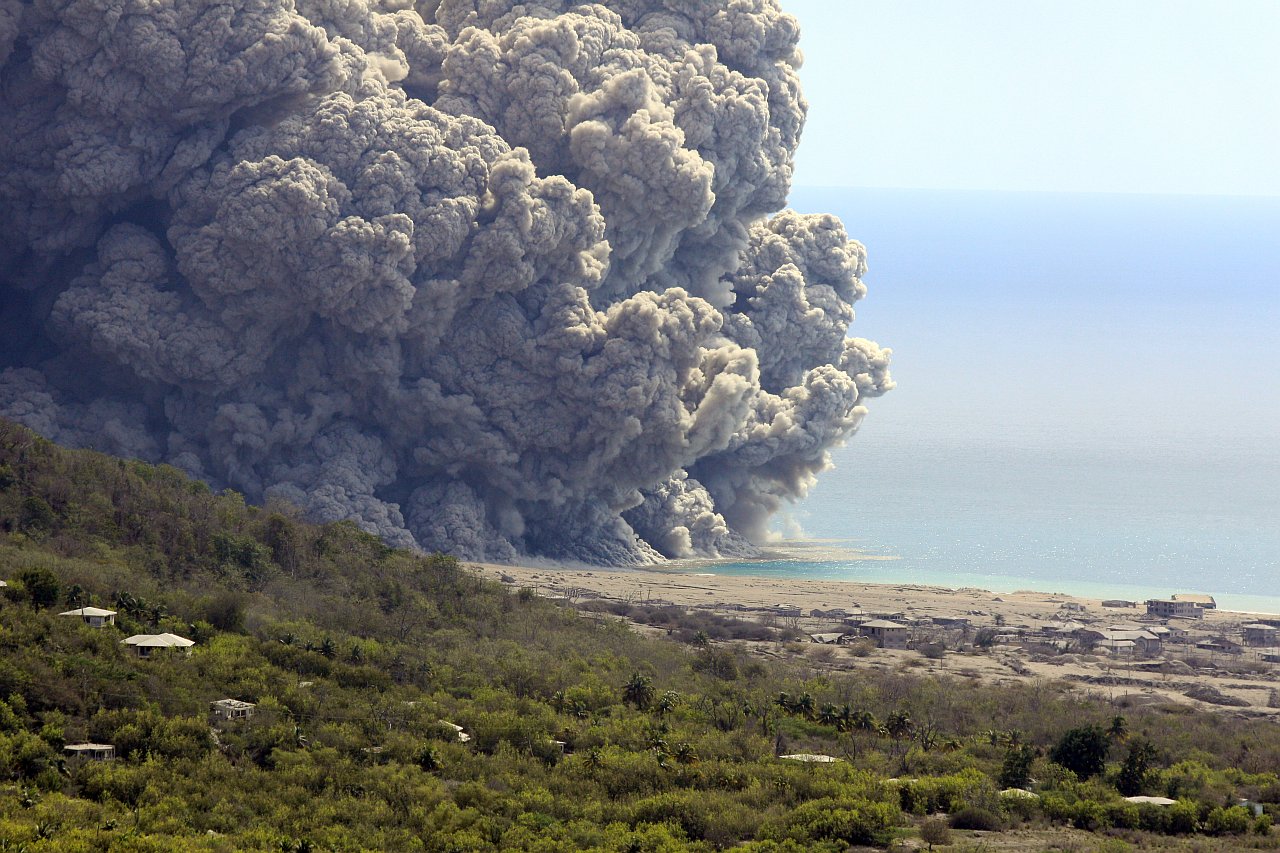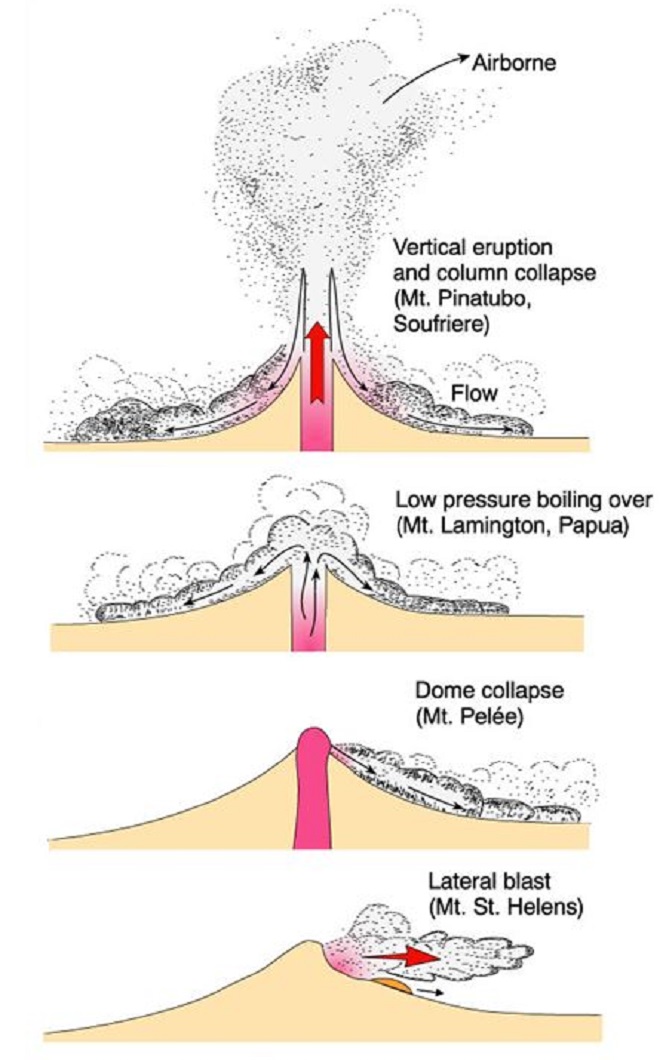

Because if you create exclusion zones based on worst-case scenarios, then decades if not centuries may pass without a worst-case eruption. This leaves the authorities in an impossible situation. It is rare that eruptions from Fuego produce such large pyroclastic flows that travel so far.

This suggests that further education of people living in and around Fuego of its volcanic hazards would not only be helpful, it would save lives. It is certainly a hypnotic and beautiful phenomenon to observe, but any volcanic cloud moving even vaguely in your direction is a clear sign to flee. What surprised many volcanologists (including us) is that people were actually standing and taking pictures while watching this billowing cloud descend. Small-medium pyroclastic flows at Mayon Volcano. The worst place to be when a pyroclastic flow is on the move is in a valley, which is why the spectators at the road bridge were lucky to escape. But their higher density also gives them momentum, so they can travel up the sides of valleys, and even over mountains. As they are heavier (denser) than air, they tend to be funnelled into valleys. Speeds generally range between 70-200mph, but they have been recorded reaching 450mph. You can expect temperatures of 100-600☌ and they can travel fast – very fast on steep slopes. Pyroclastic flows (also known as pyroclastic density currents) contain a hellish combination of hot rock fragments (pyroclasts), superheated air, and volcanic gases. These spectators escaped death by seconds, as this benign-looking ash cloud is the notorious killer that is a pyroclastic flow. Footage shows the ash cloud quickly pass under and then over the bridge. Unease spreads and soon alarms sound before people rush away just in time. Spectators and officials watch mesmerised, but then the cloud moves into the valley and heads directly towards the bridge. So, just what are these flows and why are they such killers? And what can people do to avoid them?įootage taken from a road bridge over a dry valley from on June 3 at Fuego shows what appears to be a soft and billowing ash cloud gently flowing down the volcano. Of these two, pyroclastic flows are the big killers, and are responsible for the deaths from the latest eruption. These larger eruptions have two main primary hazards – falling ash and bombs (collectively known as tephra), and pyroclastic flows. But Fuego also has a reputation for producing larger explosive eruptions.

In recent years, Fuego has regularly ejected small gas and ash eruptions, which hold little risk to surrounding populations. Harris et al.'', "Downstream aggradation owing to lava dome extrusion and rainfall runoff at Volcán Santiaguito, Guatemala", ''in'' William Ingersoll Rose (ed.), ''Volcanic Hazards in Central America?, page 86Ī regime of persistent lahar activity results when eruptive activity continually supplies unconsolidated volcanic material for remobilization.Dozens of people have been killed, and with many more missing, after Volcán de Fuego (Fuego) in Guatemala erupted on June 3 2018. A deposit containing blocks of varied compositions with rounded shapes is more likely to have been formed by a ' lahar than by a glowing avalanche. Both are characteristically unstratified and unsorted. Pyroclastic flows are often difficult to distinguish in outcrops from a similar type of fragmental debris flow known as lahars'''''. * 2000, Jacques-Marie Bardintzeff & Alexander R.Such a highly destructive mud-flow (termed a lahar ) eventually stops as a pile of debris of all shapes and sizes, as mixed up as a glacial moraine the two deposits have often been confused. * 1985, Jocelyn Thornton, Field Guide to New Zealand Geology, page 204.


 0 kommentar(er)
0 kommentar(er)
